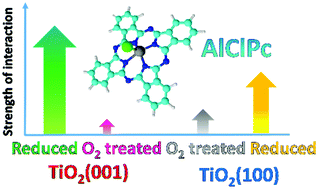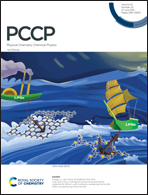The interface between chloroaluminum phthalocyanine and titanium dioxide: the influence of surface defects and substrate termination†
Abstract
Interface properties of chloroaluminum(III) phthalocyanine (AlClPc) on two different rutile titanium dioxide (TiO2) single crystal surfaces ((100) and (001)) have been studied using X-ray and ultraviolet photoemission spectroscopy (XPS and UPS). It is shown that the strength of the interaction clearly depends on the substrate termination and preparation. Generally, the (001) surface is more reactive compared to the (100) surface. The most important interaction channel involves the nitrogen atoms of the phthalocyanine macrocycle. An exposure to oxygen during the annealing steps of the preparation procedure allows diminishing the extent of interaction of nitrogen with titanium dioxide. The work function of AlClPc/TiO2 is rather independent of the substrate, indicating a pinning regime at all interfaces, where the HOMO of the molecule is aligned at the maximum of the defect states of the substrate.



 Please wait while we load your content...
Please wait while we load your content...